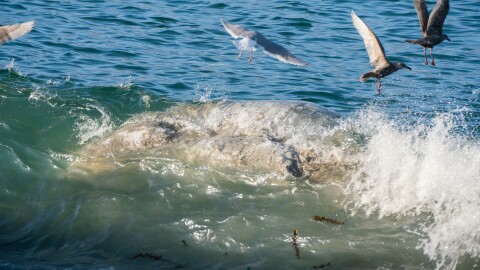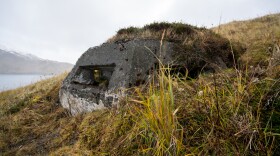-
The Alaska Earthquake Center is in negotiations with the National Oceanic and Atmospheric Administration to restore funding for nine seismic stations.
-
A dead humpback whale was spotted in Unalaska Bay on Dec. 4, the third reported dead whale to wash up on the island since Oct. 16.
-
A group of scientists wrapped up a deep-sea expedition in the western Aleutians this summer. They explored parts of the ocean floor no human has ever been before, and they found huge populations of healthy coral and sponges.
-
Researchers are finding the poisonous toxin throughout the year, and in animals away from the ocean.
-
The Aleut Corp., Adak’s regional Native corporation, signed an agreement in May 2025 to lease 3,500 acres to Pacific H2, an Oregon-based energy company. The 90-year lease allows Pacific H2 to build wind turbines that would power a permanently docked green ammonia plant in Adak’s harbor. The facility would be Alaska’s first green ammonia plant.
-
Unalaska is famous for its deep-water port that doesn't freeze in the winter, but the island hasn’t always been this warm.
-
Ten fur seals and hundreds of fish washed up dead on a Pribilof beach last year. New research links the die-off to warming oceans.
-
There are no bears on most of the Aleutians Islands today. But a new study reveals that bears likely lived in Unalaska and Amaknak Island thousands of years ago, solving a decades-long archaeological mystery.
-
At Izembek Lagoon, Pacific black brant are choosing to overwinter in the Bering Sea — drawn by warming waters and the eelgrass meadows beneath.
-
The Knik Tribe in South Central Alaska has been running a Paralytic Shellfish Poisoning monitoring program for nearly two decades to prevent deadly tragedies. However, the project was placed on “pause” in April as the federal government investigates its “legitimacy” in order to continue funding.
-
In this episode of “Island Interviews,” KUCB’s Sofia Stuart-Rasi sat down with Jackie Adams, the City of Unalaska's grants coordinator, Dr. Shanoy Anderson, the environmental director with the Qawalangin Tribe, and Donna Van Flein, corporate affairs and grants coordinator for the Ounalashka Corporation.
-
Alaska officials say the changes could make fishing less safe and undermine science critical to managing fisheries.
















